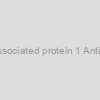huntington Antibody
huntington Antibody
 Antibody) Huntington Disease Gene Regulatory Region-Binding Protein 2 (HDBP2) Antibody |
|||
| abx031218-80l | Abbexa | 80 µl | 343.2 EUR |
 Antibody) Huntington Disease Gene Regulatory Region-Binding Protein 1 (HDBP1) Antibody |
|||
| abx027897-400ul | Abbexa | 400 ul | 627.6 EUR |
 Antibody) Huntington Disease Gene Regulatory Region-Binding Protein 1 (HDBP1) Antibody |
|||
| abx027897-80l | Abbexa | 80 µl | 343.2 EUR |
 OERA00064-50UG - Huntington pS421 CONTROL PEPTIDE |
|||
| OERA00064-50UG | Aviva Systems Biology | 50ug | 169 EUR |
 OERA00065-50UG - Huntington pS421 CONTROL PEPTIDE |
|||
| OERA00065-50UG | Aviva Systems Biology | 50ug | 169 EUR |
 Huntingtin antibody |
|||
| 70R-36702 | Fitzgerald | 100 ug | 392.4 EUR |
|
Description: Rabbit Polyclonal Huntingtin antibody |
|||
 Huntingtin Antibody |
|||
| 49841-100ul | SAB | 100ul | 399.6 EUR |
 Huntingtin Antibody |
|||
| 49841-50ul | SAB | 50ul | 286.8 EUR |
 Huntingtin antibody |
|||
| PAab09844 | Lifescience Market | 100 ug | 463.2 EUR |
 Huntingtin Antibody |
|||
| E11-1050B | EnoGene | 100μg | 225 EUR |
|
Description: Available in various conjugation types. |
|||
 Huntingtin Antibody |
|||
| R31392 | NSJ Bioreagents | 100 ug | 356.15 EUR |
|
Description: The Huntingtin gene, also called HTT or HD (Huntington disease), is the IT15 (interesting transcript 15) gene which codes for a protein called the Huntingtin. The protein has no sequence homology with other proteins and is highly expressed in neurons and tests in humans and rodents. HTT upregulates the expression of Brain Derived Neurotrophic Factor (BDNF) at the transcription level, and this gene is required for normal development. HTT is involved in vesicle trafficking as it interacts with HIP1, a clathrin-binding protein, to mediate endocytosis, the absorption of materials into a cell. HTT was also visualized as punctate staining likely to represent nerve endings. Additionally, wildtype Huntingtin may function in the nucleus in the assembly of nuclear matrix-bound protein complexes involved with transcriptional repression and RNA processing. |
|||
 Huntingtin Antibody |
|||
| DF7663 | Affinity Biosciences | 100ul | 280 EUR |
|
Description: Human |
|||
 Huntingtin Antibody |
|||
| DF7663-100ul | Affinity Biosciences | 100ul | 280 EUR |
 Huntingtin Antibody |
|||
| DF7663-200ul | Affinity Biosciences | 200ul | 350 EUR |
 Huntingtin Antibody |
|||
| 49841 | SAB | 100ul | 499 EUR |
 Antibody) Huntingtin (HTT) Antibody |
|||
| 20-abx172840 | Abbexa |
|
|
 Antibody) Huntingtin (HTT) Antibody |
|||
| 20-abx172841 | Abbexa |
|
|
 Antibody) Huntingtin (HTT) Antibody |
|||
| 20-abx176878 | Abbexa |
|
|
 Antibody) Huntingtin (HTT) Antibody |
|||
| 20-abx176879 | Abbexa |
|
|
 Antibody) Huntingtin (HTT) Antibody |
|||
| 20-abx176880 | Abbexa |
|
|
 Antibody) Huntingtin (HTT) Antibody |
|||
| 20-abx216097 | Abbexa |
|
|
 Antibody) Huntingtin (HTT) Antibody |
|||
| 20-abx326636 | Abbexa |
|
|
 Antibody) Huntingtin (HTT) Antibody |
|||
| 20-abx129600 | Abbexa |
|
|
 Antibody) Huntingtin (HTT) Antibody |
|||
| 20-abx123068 | Abbexa |
|
|
 anti- Huntingtin antibody |
|||
| FNab09844 | FN Test | 100µg | 658.5 EUR |
|
Description: Antibody raised against Huntingtin |
|||
 anti- Huntingtin antibody |
|||
| LSMab09844 | Lifescience Market | 100 ug | 463.2 EUR |
 Antibody) Huntingtin (pS421) Antibody |
|||
| abx216096-100ug | Abbexa | 100 ug | 526.8 EUR |
 Huntingtin Conjugated Antibody |
|||
| C49841 | SAB | 100ul | 476.4 EUR |
 Huntingtin Polyclonal Antibody |
|||
| ABP54729-003ml | Abbkine | 0.03ml | 189.6 EUR |
|
Description: A polyclonal antibody for detection of Huntingtin from Human, Mouse, Rat. This Huntingtin antibody is for IHC-P, ELISA. It is affinity-purified from rabbit antiserum by affinity-chromatography using epitope-specific immunogenand is unconjugated. The antibody is produced in rabbit by using as an immunogen synthesized peptide derived from human Huntingtin around the non-phosphorylation site of S421 |
|||
 Huntingtin Polyclonal Antibody |
|||
| ABP54729-01ml | Abbkine | 0.1ml | 346.8 EUR |
|
Description: A polyclonal antibody for detection of Huntingtin from Human, Mouse, Rat. This Huntingtin antibody is for IHC-P, ELISA. It is affinity-purified from rabbit antiserum by affinity-chromatography using epitope-specific immunogenand is unconjugated. The antibody is produced in rabbit by using as an immunogen synthesized peptide derived from human Huntingtin around the non-phosphorylation site of S421 |
|||
 Huntingtin Polyclonal Antibody |
|||
| ABP54729-02ml | Abbkine | 0.2ml | 496.8 EUR |
|
Description: A polyclonal antibody for detection of Huntingtin from Human, Mouse, Rat. This Huntingtin antibody is for IHC-P, ELISA. It is affinity-purified from rabbit antiserum by affinity-chromatography using epitope-specific immunogenand is unconjugated. The antibody is produced in rabbit by using as an immunogen synthesized peptide derived from human Huntingtin around the non-phosphorylation site of S421 |
|||
 Huntingtin Polyclonal Antibody |
|||
| ES5728-100ul | ELK Biotech | 100ul | 334.8 EUR |
|
Description: A Rabbit Polyclonal antibody against Huntingtin from Human/Mouse/Rat. This antibody is tested and validated for IHC, WB, ELISA |
|||
 Huntingtin Polyclonal Antibody |
|||
| ES5728-50ul | ELK Biotech | 50ul | 248.4 EUR |
|
Description: A Rabbit Polyclonal antibody against Huntingtin from Human/Mouse/Rat. This antibody is tested and validated for IHC, WB, ELISA |
|||
 Huntingtin Polyclonal Antibody |
|||
| E20-72263 | EnoGene | 100ug | 225 EUR |
|
Description: Available in various conjugation types. |
|||
 Antibody) Huntingtin (Phospho- Ser421) Antibody |
|||
| ABF8067 | Lifescience Market | 100 ug | 525.6 EUR |
 Polyclonal Antibody) Huntingtin (HTT) Polyclonal Antibody |
|||
| CAU21835-100ul | Biomatik Corporation | 100ul | 241.9 EUR |
 Polyclonal Antibody) Huntingtin (HTT) Polyclonal Antibody |
|||
| CAU21835-200ul | Biomatik Corporation | 200ul | 302.4 EUR |
) Polyclonal Antibody to Huntingtin (HTT) |
|||
| PAH922Hu01 | Cloud-Clone | 100ul | 245 EUR |
) Polyclonal Antibody to Huntingtin (HTT) |
|||
| PAH922Mu01 | Cloud-Clone | 100ul | 252 EUR |
 Polyclonal Antibody (Mouse)) Huntingtin (HTT) Polyclonal Antibody (Mouse) |
|||
| 4-PAH922Mu01 | Cloud-Clone |
|
|
|
Description: A Rabbit polyclonal antibody against Mouse Huntingtin (HTT) |
|||
 Mouse Anti Huntingtin Monoclonal Antibody |
|||
| CABT-51054MH | Creative Diagnostics | 0.1 mg | 858 EUR |
 Polyclonal Antibody (Mouse), PE) Huntingtin (HTT) Polyclonal Antibody (Mouse), PE |
|||
| 4-PAH922Mu01-PE | Cloud-Clone |
|
|
|
Description: A Rabbit polyclonal antibody against Mouse Huntingtin (HTT). This antibody is labeled with PE. |
|||
 Polyclonal Antibody (Mouse), APC) Huntingtin (HTT) Polyclonal Antibody (Mouse), APC |
|||
| 4-PAH922Mu01-APC | Cloud-Clone |
|
|
|
Description: A Rabbit polyclonal antibody against Mouse Huntingtin (HTT). This antibody is labeled with APC. |
|||
 Polyclonal Antibody (Mouse), Cy3) Huntingtin (HTT) Polyclonal Antibody (Mouse), Cy3 |
|||
| 4-PAH922Mu01-Cy3 | Cloud-Clone |
|
|
|
Description: A Rabbit polyclonal antibody against Mouse Huntingtin (HTT). This antibody is labeled with Cy3. |
|||
 Polyclonal Antibody (Mouse), HRP) Huntingtin (HTT) Polyclonal Antibody (Mouse), HRP |
|||
| 4-PAH922Mu01-HRP | Cloud-Clone |
|
|
|
Description: A Rabbit polyclonal antibody against Mouse Huntingtin (HTT). This antibody is labeled with HRP. |
|||
) Mouse Monoclonal Huntingtin Antibody (1A771) |
|||
| TA336451 | Origene Technologies GmbH | 100 µg | Ask for price |
 Polyclonal Antibody (Mouse), FITC) Huntingtin (HTT) Polyclonal Antibody (Mouse), FITC |
|||
| 4-PAH922Mu01-FITC | Cloud-Clone |
|
|
|
Description: A Rabbit polyclonal antibody against Mouse Huntingtin (HTT). This antibody is labeled with FITC. |
|||
 Antibody) Huntingtin Associated Protein 1 (HAP1) Antibody |
|||
| abx233753-100ug | Abbexa | 100 ug | 610.8 EUR |
 Antibody) Huntingtin Associated Protein 1 (HAP1) Antibody |
|||
| 20-abx172842 | Abbexa |
|
|
 Antibody) Huntingtin Phospho-Ser421 (HTT pS421) Antibody |
|||
| 20-abx326637 | Abbexa |
|
|
 Antibody) Huntingtin Associated Protein 1 (HAP1) Antibody |
|||
| 20-abx128157 | Abbexa |
|
|
 Antibody) Huntingtin Associated Protein 1 (HAP1) Antibody |
|||
| 20-abx129795 | Abbexa |
|
|
 Antibody) Huntingtin Associated Protein 1 (HAP1) Antibody |
|||
| 20-abx130407 | Abbexa |
|
|
 Antibody) Huntingtin Associated Protein 1 (Hap1) Antibody |
|||
| abx431315-200ul | Abbexa | 200 ul | 460.8 EUR |
 Antibody) Huntingtin Associated Protein 1 (HAP1) Antibody |
|||
| abx432785-200ul | Abbexa | 200 ul | 460.8 EUR |
 Huntingtin recombinant monoclonal antibody |
|||
| A5933 | Bimake | 100ul X 3 | 714 EUR |
|
Description: A recombinant monoclonal antibody from rabbit against human Huntingtin for WB, IHC,ELISA |
|||
) Polyclonal HTT / Huntingtin Antibody (C-Terminus) |
|||
| APR12408G | Leading Biology | 0.05mg | 580.8 EUR |
|
Description: A polyclonal antibody raised in Rabbit that recognizes and binds to Human HTT / Huntingtin (C-Terminus). This antibody is tested and proven to work in the following applications: |
|||
 Antibody, Clone: EP867Y) Monoclonal Huntingtin (HTT) Antibody, Clone: EP867Y |
|||
| APR12411G | Leading Biology | 0.1ml | 633.6 EUR |
|
Description: A Monoclonal antibody against Human Huntingtin (HTT). The antibodies are raised in Rabbit and are from clone EP867Y. This antibody is applicable in WB and IHC |
|||
 Antibody) Huntingtin Interacting Protein 2 (HIP2) Antibody |
|||
| 20-abx128248 | Abbexa |
|
|
 Antibody) Huntingtin Interacting Protein 2 (HIP2) Antibody |
|||
| abx432794-200ul | Abbexa | 200 ul | 460.8 EUR |
 Polyclonal Antibody) Huntingtin (phospho Ser421) Polyclonal Antibody |
|||
| ABP54728-003ml | Abbkine | 0.03ml | 189.6 EUR |
|
Description: A polyclonal antibody for detection of Huntingtin phospho Ser421) from Human, Mouse, Rat. This Huntingtin phospho Ser421) antibody is for IHC-P, ELISA. It is affinity-purified from rabbit antiserum by affinity-chromatography using epitope-specific immunogenand is unconjugated. The antibody is produced in rabbit by using as an immunogen synthesized peptide derived from human Huntingtin around the phosphorylation site of S421 |
|||
 Polyclonal Antibody) Huntingtin (phospho Ser421) Polyclonal Antibody |
|||
| ABP54728-01ml | Abbkine | 0.1ml | 346.8 EUR |
|
Description: A polyclonal antibody for detection of Huntingtin phospho Ser421) from Human, Mouse, Rat. This Huntingtin phospho Ser421) antibody is for IHC-P, ELISA. It is affinity-purified from rabbit antiserum by affinity-chromatography using epitope-specific immunogenand is unconjugated. The antibody is produced in rabbit by using as an immunogen synthesized peptide derived from human Huntingtin around the phosphorylation site of S421 |
|||
 Polyclonal Antibody) Huntingtin (phospho Ser421) Polyclonal Antibody |
|||
| ABP54728-02ml | Abbkine | 0.2ml | 496.8 EUR |
|
Description: A polyclonal antibody for detection of Huntingtin phospho Ser421) from Human, Mouse, Rat. This Huntingtin phospho Ser421) antibody is for IHC-P, ELISA. It is affinity-purified from rabbit antiserum by affinity-chromatography using epitope-specific immunogenand is unconjugated. The antibody is produced in rabbit by using as an immunogen synthesized peptide derived from human Huntingtin around the phosphorylation site of S421 |
|||
 Polyclonal Antibody) Huntingtin (phospho Ser421) Polyclonal Antibody |
|||
| ES5727-100ul | ELK Biotech | 100ul | 334.8 EUR |
|
Description: A Rabbit Polyclonal antibody against Huntingtin (phospho Ser421) from Human/Mouse/Rat. This antibody is tested and validated for IHC, WB, ELISA |
|||
 Polyclonal Antibody) Huntingtin (phospho Ser421) Polyclonal Antibody |
|||
| ES5727-50ul | ELK Biotech | 50ul | 248.4 EUR |
|
Description: A Rabbit Polyclonal antibody against Huntingtin (phospho Ser421) from Human/Mouse/Rat. This antibody is tested and validated for IHC, WB, ELISA |
|||
 Polyclonal Antibody) Huntingtin (phospho Ser421) Polyclonal Antibody |
|||
| E20-61000 | EnoGene | 100ug | 225 EUR |
|
Description: Available in various conjugation types. |
|||
 Polyclonal Antibody) Huntingtin (phospho Ser421) Polyclonal Antibody |
|||
| E013813 | EnoGene | 100μg/100μl | 255 EUR |
|
Description: Available in various conjugation types. |
|||
 Polyclonal Antibody) Huntingtin (phospho Ser421) Polyclonal Antibody |
|||
| 13813 | SAB | 100ul | 319 EUR |
 Polyclonal Antibody (Mouse), APC-Cy7) Huntingtin (HTT) Polyclonal Antibody (Mouse), APC-Cy7 |
|||
| 4-PAH922Mu01-APC-Cy7 | Cloud-Clone |
|
|
|
Description: A Rabbit polyclonal antibody against Mouse Huntingtin (HTT). This antibody is labeled with APC-Cy7. |
|||
 Antibody) Huntingtin Interacting Protein 12 (HIP12) Antibody |
|||
| 20-abx129100 | Abbexa |
|
|
 Antibody) Huntingtin Interacting Protein 12 (HIP12) Antibody |
|||
| abx430236-200ul | Abbexa | 200 ul | 343.2 EUR |
 Huntingtin-associated protein 1 Antibody / HAP1 |
|||
| RQ6318 | NSJ Bioreagents | 100 ug | 356.15 EUR |
|
Description: Huntingtin-associated protein 1 (HAP1) is a protein which in humans is encoded by the HAP1 gene. Huntington's disease (HD), a neurodegenerative disorder characterized by loss of striatal neurons, is caused by an expansion of a polyglutamine tract in the HD protein huntingtin. This gene encodes a protein that interacts with huntingtin, with two cytoskeletal proteins (dynactin and pericentriolar autoantigen protein 1), and with a hepatocyte growth factor-regulated tyrosine kinase substrate. The interactions with cytoskeletal proteins and a kinase substrate suggest a role for this protein in vesicular trafficking or organelle transport. Several alternatively spliced transcript variants encoding different isoforms have been described for this gene. |
|||
